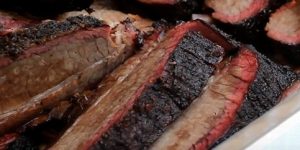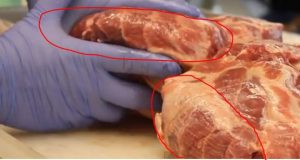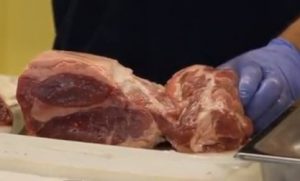The sanctioned BBQ world is serious business. Maybe too serious if you’ve ever seen BBQ Pit Masters on TV. There are pages of detailed rules that are never really reviewed prior to competitions by judges or by cookers. Some rules are regional by nature. Like, meat categories (whole hog is hard to find outside the South). Others – like the rule for only using charcoal or gas as a heat source – is somewhat common. I’ve even seen rules against team members drinking to excess.
If you are looking to get the upper hand and bend the rules a bit here are a few ways that competition cooks quietly get an edge.
First, start with better meat. You can use meat that the tournament provides or bring in your own grain fed premium grade organic – more tasty – better meat. There may or may not be fine print on “only using what the sponsor provides” but the rule is rarely enforced or even checked. It’s more likely your meat cooler will only be checked for food safety reasons (like maintaining a cold enough temperature). I’ve seen teams bring in top of the line Wagyu beef brisket. It’s pricey. But if it indeed tastes better it’s a real edge. Some winning cookers have been known to bring in secret recipe pre-brined chicken.
Next, use electricity to help your cooking efficiency and consistency Many big organizations (like KCBS and MIM) forbid heat sources other than wood or charcoal. Still it’s within guidelines to get a little electric help. So gadgets have been designed to make charcoal (use hardwood lump for best flavor) more reliable and consistent in temperature. Look into retrofitting your smoker with an electric blower with a thermostat to stoke your fire up or down to the ideal temperature while you play Angry Birds in the RV. Most common are the BBQ Guru and the Stoker.
Get the most bark for your buck. Judges like bark, that savory sweet charred crust found on great BBQ meats. Trim your pork so you have the most and best tasting. The “money muscle is a tucked away tube of succulence on the Boston Butt that many cooks are trying to really take advantage of for it’s tender texture and flavor. It’s almost entirely surrounded by other parts of the butt so if you want to combine the great meat of the money muscle and the magic of great tasting bark you’ll have to trim out the money muscle before cooking. In some competitions it’s against the rules to cook large meats in parts so you may want to simply keep it a small portion still attached to the mother ship.
Cheat the smoke ring. It is absolutely expected for brisket and pork to have a nice smoke ring when turned in to judges. This is formed by a chemical reaction to the smoke over low and slow temp. and time. Some say if you put COLD meat on the smoker from the start it will enhance the ring. We say don’t leave it to chance. Cheat the ring by adding some curing salt to your rub like Morton’s Tender Quick. It’s strong stuff so some cookers will coat the meat for a few hours and rinse it off before adding the tasty – bark creating rub.
Microwave friendly. As stated above… cooking with fuel other than wood or coal could be against the rules so why would you need a microwave? Well, judges like to bite into a warm piece of meat. They also judge on smell and warm meat will always be more fragrant than cold meat. A fifteen second zap in the box is sometimes the perfect bump to setting your entry a part. Against the rules? Is 15 seconds really cooking? You decide. Just silence the “beeping” and don’t let Bubba’s team see you doing it.
These rarely policed barbecue tricks may or may not be truly cheating the BBQ Rules. Read the fine print of your rules and let your conscience be your guide. The one rule you can not and should not bend is “marking” a box. This is where a team has a mole in the judging tent clued in on a special trait or “mark” on a turn in box. Don’t try. It won’t work due to rotating judges and will probably get you disqualified or marked down in appearance points. Instead, use care to really “present” your meat in the box. Follow the guidance in the rules on garnish and ask around about traditional layout. Appearance is almost always a big part of your score and it’s surprising how many cooks just plop it in the box. Pull pork (never chop) and lay out pieces in an orderly presentation.


